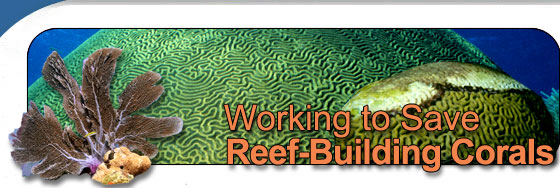Error processing SSI file
|
Florida Keys National Marine Sanctuary History
NOAA’s National Marine Sanctuary Program has managed segments of the Florida Reef Tract since 1975. The Key Largo National Marine Sanctuary was established at that time to protect 103 square nautical miles of coral reef habitat offshore of the Upper Keys. In 1981, the 5.3-square-nautical-mile Looe Key National Marine Sanctuary was established to protect this heavily used reef in the Lower Keys.
 |
|
The four-eye butterflyfish is one of hundreds of fish species which inhabit the reef environment of the Florida Keys. (Photo: Chris Huss - Florida Keys NMS)
|
By the late 1980s it had become evident that a broader, more holistic approach to protecting and conserving the health of coral reef resources had to be implemented. Irrespective of the intense management of small areas of the reef tract, sanctuary managers were witnessing declines in water quality and the health of corals that apparently had a wide range of sources. The most obvious causes of decline were non-point-source discharges, habitat degradation because of development and overuse, and changes in reef fish populations because of over-fishing.
The threat of oil drilling in the mid- to late-1980s off the Florida Keys, combined with reports of deteriorating water quality throughout the region, occurred at the same time scientists were assessing adverse affects of coral bleaching, the 1983 die-off of the long-spined urchin (Diadema antillarum), loss of living coral cover on reefs, major seagrass die-offs in Florida Bay, declines in reef fish populations, and the spread of coral diseases. These were topics of major scientific concern and the focus of several scientific workshops.
 |
|
The Florida Keys National Marine Sanctuary is visited by several marine mammal species, including the endangered West Indian manatee. (Photo: Laurel Canty-Ehrlich)
|
In the fall of 1989, subsequent to the catastrophic Exxon Valdez oil spill in Alaska, three large ships ran aground on the Florida Reef Tract within a brief, 18-day period. This final physical impact to the reef in conjunction with the cumulative effects of environmental degradation prompted Congress to take action to protect the unique coral reef ecosystem of the Florida Keys. In November 1990, President Bush signed into law the Florida Keys National Marine Sanctuary and Protection Act (FKNMS Act).
The FKNMS Act designated 2,774 square nautical miles of coastal waters surrounding the Florida Keys as the Florida Keys National Marine Sanctuary and addressed two major concerns. There was an immediate prohibition on oil drilling, including mineral and hydrocarbon leasing, exploration, development, or production within the Sanctuary. In addition, the legislation prohibited the operation of vessels longer than 164 feet in an internationally recognized ‘‘Area To Be Avoided’’ within and near the boundary of the Sanctuary.
 |
|
The hawksbill turtle, an endangered species, can occasionally be seen on the reefs of the Keys resting or feeding on sponges and jellyfish. (Photo: Jerry Burcham)
|
Congress recognized the critical role of water quality in maintaining Sanctuary resources and directed the U.S. Environmental Protection Agency, in conjunction with the State of Florida and in consultation with the Sanctuary, to develop a comprehensive Water Quality Protection Program. The FKNMS Act also called for the Sanctuary, in consultation with appropriate federal, state, and local government authorities and with a Sanctuary Advisory Council, to develop a comprehensive management plan and implement regulations to achieve protection and preservation of the resources of the Florida Keys marine environment. The management plan was implemented in 1997 and is being revised.
|



